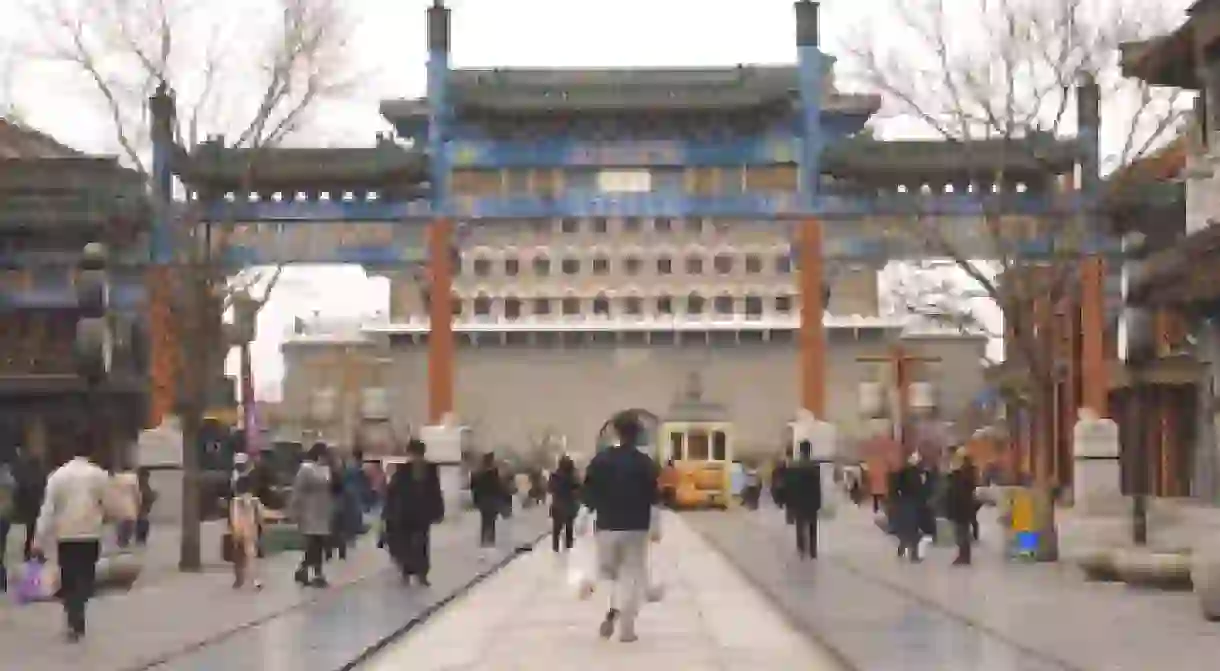A Comprehensive Guide to Beijing’s Hutongs

The hutongs have long become a common noun in the vocabulary of even the least Mandarin speaking Beijinger. Whether it be day or night, the labyrinths of Beijing’s old living quarters attract many visitors and inhabitants seeking a glimpse of the “real jing”.
Today hutongs are associated with trendy bars, hole in the wall eating joints, fashionable restored courtyards and public bathrooms (admittedly, one of the few drawbacks of hutong culture), yet the history of the area is just as interesting as its present. The term “hutong” dates back to the 13th century and the time of the Mongolian dynasty in China, it’s original meaning was “water well”. The hutongs were simple, communal housing built when the capital moved to the location of modern Beijing. These courtyard houses were first built surrounding the Forbidden city and as time passed their number gradually increased. In the last century, giving way to modern developments in the city, such as the necessity to build roads, the number of hutongs rapidly decreased. The past cannot be undone, but now the courtyards of Beijing are preserved and most of them are under the protection of the government. A number of old hutong houses have been transformed into fashionable bars and restaurants and below are some of the best.
Nanluoguxiang
A well-restored and perhaps the most touristy of all hutongs, Nanluoguxiang has managed to preserve its charms for both locals and visitors. The street is a cornucopia of street foods and small thrift shops ideal for some last minute souvenir shopping. Bars, cafes and live music venues are in abundance. Nanluoguxiang is long and gradually turns into Beluoguxiang where 8-Bit bar offers a variety of video games along with a drinks menu. If you’re feeling adventurous, (which it’s important to be in Beijing), step off the main street and look at what is tucked away in the smaller alleys. For some fresh brews step into Great Leap Brewery and chose from an exciting list of craft beers. Located in the adjacent Ju’er Hutong Fu Tapas and Wine provides a more sophisticated atmosphere and a change from the generally laid-back bar scene.
How to get there: Take the subway line 6 or 8 to Nanluoguxiang station and walk out of exit E. The exit will lead you directly onto the street.

Fangjia Hutong
Fangjia can offer both a quiet place to study and relax or can be the start of a wild night. For beer lovers Peiping Machine Brewing has a number of local brews on tap accompanied with some easy finger foods. The Tiki Bungalow , a local favourite, offers extra-large cocktails to share among friends and the neighbouring Knights and Merchants bar is Medieval Europe themed, serving mead in wooden cups and displaying all sorts of armour and weapons. For dinner options, Ramo welcomes visitors with trendy pizza, a stylish interior and a disco ball in the bathroom.
How to get there: Take the subway line 5 to Beixinqiao station and walk out of exit B . Fangjia Hutong is located between two parallel streets: Yonghegong Street and Andingmen Street. If you take the Yonghegong entrance, walk down for a few minutes before you reach the bars and restaurants.

Wudaoying Hutong
In the morning Wudaoying is quiet and peaceful making it the perfect place to start the day. For those with a sweet tooth, Wudaoying has a number of tucked away cafés offering a quiet place to read, work or just enjoy a drink. Among them He Coffee has a selection brunch deals or pastries to go with a morning cup of coffee. After a long day of exploring the city, walk into Zigzag massage parlour for a foot massage. In the evening Wudaoying’s restaurants and bars open their doors. This street may not be your best choice for local foods, but has a selection of international cuisines. In Argo dip into some hummus and try their moussaka or maybe enjoy some nachos with spicy salsa served in a sombrero at Pebbles Courtyard. For an evening drink, Panda Brew can offer a pint in the company of several large stuffed pandas.
How to get there: Take the subway line 2 or 5 to Yonghegong Lama Temple station and walk out of exit G and the entrance to the Hutong will be on the left.

Baochao Hutong
Baocaho Hutong is one of the many hutongs branching out from Gulou East Street. As you make your way from the subway you can enjoy some vintage shopping in the many little stores located down the busy street. On Baochao Hutong you can have your fill of dumplings at Mr. Shi’s Dumpling with a mixture of traditional and experimental stuffing. On any given night mix with the local crowd at Modernista, enjoying a creative drinks menu and, if you’re in luck, some live music and dancing. For a more low key alternative get comfortable with a glass of wine on the terrace of The Orchid hotel and find refuge from the bustling streets of Beijing.
How to get there: Take the subway line 8 to Shichahai station and walk out of Exit A2. Head towards the Drum and Bell towers and take a right onto Gulou East Steet. A few hundred metres down you will find Baochao Hutong on your left.














